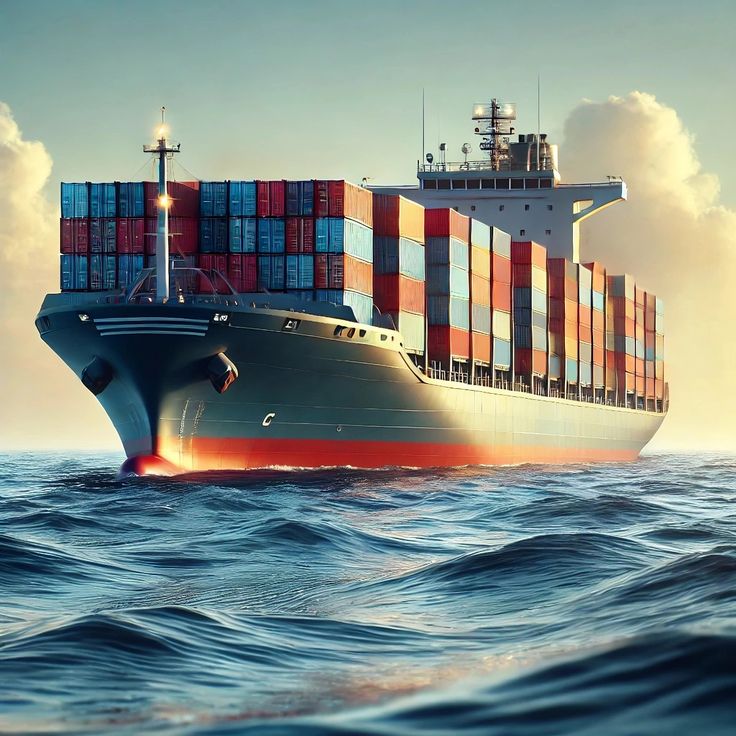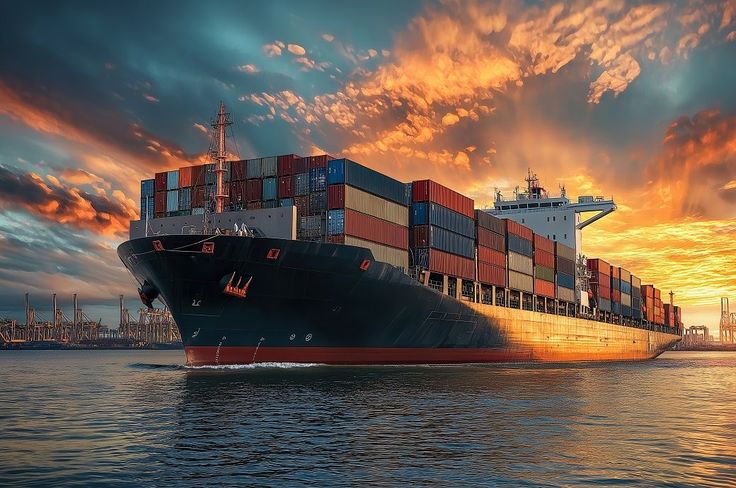- By Della tj
- September 4, 2025
- Sea Freight, Shipping
Global trade relies heavily on shipping by sea from China, which accounts for over 90% of international cargo. Importers choose sea freight because it offers the best balance of cost, reliability, and capacity. However, rising fuel costs, port congestion, and seasonal demand affect prices. This guide explains costs, timelines, documents, methods, and strategies to optimize sea freight shipments, with real-world examples from China to key destinations.
What Is Sea Freight from China?
Sea freight involves transporting goods in containers on cargo vessels. Companies typically book either:
- FCL (Full Container Load): One shipper occupies the whole container.
- LCL (Less than Container Load): Cargo is consolidated with other shipments.
Accordingly, shippers with large volumes save more per unit with FCL, while smaller companies benefit from LCL flexibility.
How Much Does Shipping by Sea from China Cost?
Sea freight is priced based on container size, route, and demand.
| Container Type | Average Price (USD) | Capacity | Best Use Case |
|---|---|---|---|
| 20GP | $2,200 – $2,700 | ~28 CBM, 21–23 tons | Small to medium shipments |
| 40GP | $4,300 – $4,900 | ~58 CBM, 26–28 tons | Furniture, textiles, machinery |
| 40HQ | $4,500 – $5,200 | ~68 CBM, 26–28 tons | Lightweight bulk cargo |
| LCL (per CBM) | $120 – $160 | Charged per volume | Shipments <15 CBM |
Moreover, costs increase by 15–20% during peak seasons such as pre-Christmas and Chinese New Year.

Why Choose Shipping by Sea from China?
- Low Cost: Cheapest mode for bulk cargo.
- High Capacity: Handles oversized goods.
- Global Reach: China connects to 600+ ports.
- Sustainability: Lower carbon footprint than air.
However, transit times are longer compared with air freight.
What Is the Transit Time for Sea Freight from China?
| Destination | Transit Time (Days) | Notes |
|---|---|---|
| China → USA (LA) | 18–25 | West Coast faster than East Coast |
| China → UK (Felixstowe) | 28–33 | Includes Europe’s largest port |
| China → Australia | 20–25 | Stable schedule, high demand lane |
| China → Africa (Lagos) | 35–42 | Congestion may add delays |
| China → SE Asia | 12–20 | Shortest, highly frequent sailings |
In addition, delays can occur due to customs, strikes, or weather disruptions.
What Documents Are Required for Sea Freight?
| Document | Purpose |
|---|---|
| Bill of Lading | Evidence of cargo receipt & shipment |
| Commercial Invoice | Declares value for customs |
| Packing List | Cargo details, dimensions, weight |
| Certificate of Origin | Confirms Chinese origin |
| Insurance Certificate | Covers damage/loss risk |
| Import License | Some countries require for clearance |
Without accurate documents, clearance may be delayed, causing extra charges.
How Does Sea Freight Compare to Air and Rail?
| Aspect | Sea Freight | Air Freight | Rail Freight |
|---|---|---|---|
| Cost | Lowest per CBM | Highest per kg | Medium |
| Speed | 20–35 days | 3–7 days | 12–18 days |
| Capacity | Largest (up to 20,000 TEU) | Limited to aircraft hold | Limited to inland routes |
| Reliability | Port delays possible | Weather/fuel costs vary | Border delays possible |
| Best Use Case | Furniture, textiles, bulk | Urgent, electronics | Europe-bound cargo |
To summarize, sea freight is best for large and non-urgent shipments.
How to Reduce Sea Freight Costs from China?
- Book Early: Avoid last-minute surcharges.
- Choose Alternative Ports: Qingdao or Xiamen instead of Shanghai.
- Consolidate Cargo: Use LCL for smaller volumes.
- Long-Term Contracts: Negotiate with carriers.
- Work with Forwarders: Professionals secure discounted rates.
As a result, importers can save 15–20% annually.
Which Are the Main Chinese Ports for Sea Freight?
- Shanghai Port: World’s busiest container hub.
- Shenzhen Port: Key for electronics and South China factories.
- Ningbo-Zhoushan: Large volumes of machinery and raw materials.
- Qingdao Port: Gateway for North China trade.
- Guangzhou Port: Strong for Southeast Asia connections.
Indeed, choosing the right port reduces inland trucking costs.
Common Challenges in Shipping by Sea from China
- Customs Delays: Missing documents lead to penalties.
- Congestion: Peak seasons overload terminals.
- Rate Volatility: Fuel and demand shifts affect pricing.
- Storage Fees: Delayed pickup increases demurrage costs.
On the other hand, proactive planning with a forwarder minimizes risks.
Real Case Studies of Sea Freight from China
Case 1: Ningbo to Los Angeles
- Cargo: 40HQ container, electronics (22 tons)
- Cost: $5,100
- Transit Time: 20 days
- Result: 12% savings by booking during off-peak.
Case 2: Shanghai to Sydney
- Cargo: 20GP container, furniture (12 tons)
- Cost: $2,450
- Transit Time: 21 days
- Result: On-time delivery, no demurrage charges.
Conclusion
In conclusion, shipping by sea from China is the most cost-effective way to transport goods globally. Although slower than air, sea freight offers unmatched capacity and price advantages. Importers who consolidate cargo, negotiate rates, and prepare documents carefully will enjoy smoother trade. Working with an experienced freight forwarder ensures cost savings, reliable schedules, and stress-free logistics.
Request a Quote
Need a tailored solution for your shipping from China?
Let TJ China Freight Forwarder assist you with reliable, cost-effective service.
FAQs
Q1.What is the cheapest method for shipping by sea from China?
The cheapest method is FCL when you can fill an entire container. For smaller shipments, LCL helps reduce costs through consolidation.
Q2.How long does sea freight from China usually take?
Transit takes 20–35 days depending on the destination. West Coast USA routes are faster than Europe or Africa routes.
Q3.Which documents are required for sea freight from China?
Key documents include a Bill of Lading, commercial invoice, packing list, and certificate of origin. Insurance and import permits may also be required.
Q4.What factors affect sea freight cost from China?
Costs depend on fuel prices, shipping line rates, seasonality, and port congestion. Cargo size and weight also influence rates.
Q5.Which ports in China handle the largest shipments?
Shanghai, Shenzhen, Ningbo, Qingdao, and Guangzhou are the busiest ports for global containerized exports.




